The condensate drain line is an essential part of your AC since it removes condensation produced by the evaporator coil. It's crucial to know where it goes to ensure that it works effectively. Where should you run your AC drain line? We've researched the question for you and share information you need to know in this post.
A condensate drain line usually goes from your unit indoors to the outdoors near your air conditioner's external unit. The pipe connected to the exterior of your home is where the drain line ends. In contrast, the capped pipe beside or near your indoor AC unit is the condensate drain access point.
Keeping your condensate drain line in top condition greatly benefits your air conditioner. So continue reading to learn more about drain line installation and the issues can arise during the process.
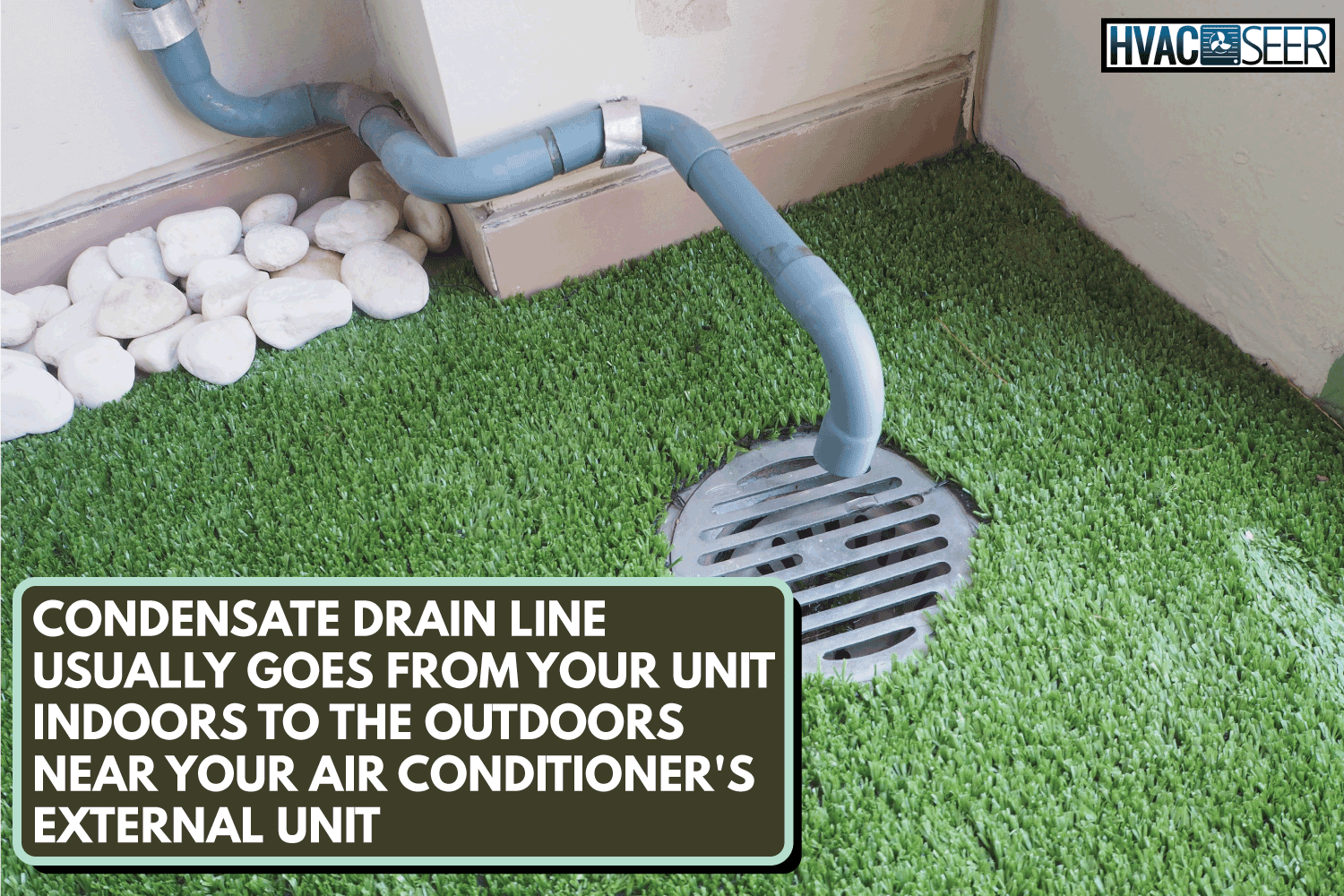
Where Should The Condensate Drain Line Go?
A condensate drain line usually runs from the inside to the outside of your home. The line is attached to or with the plumbing system in newer homes or separated in the attic in older properties.
You can also install the line depending on your preference or your property's needs. But regardless of where or how you install it, it's crucial to ensure the drain line properly releases condensation away from your home.
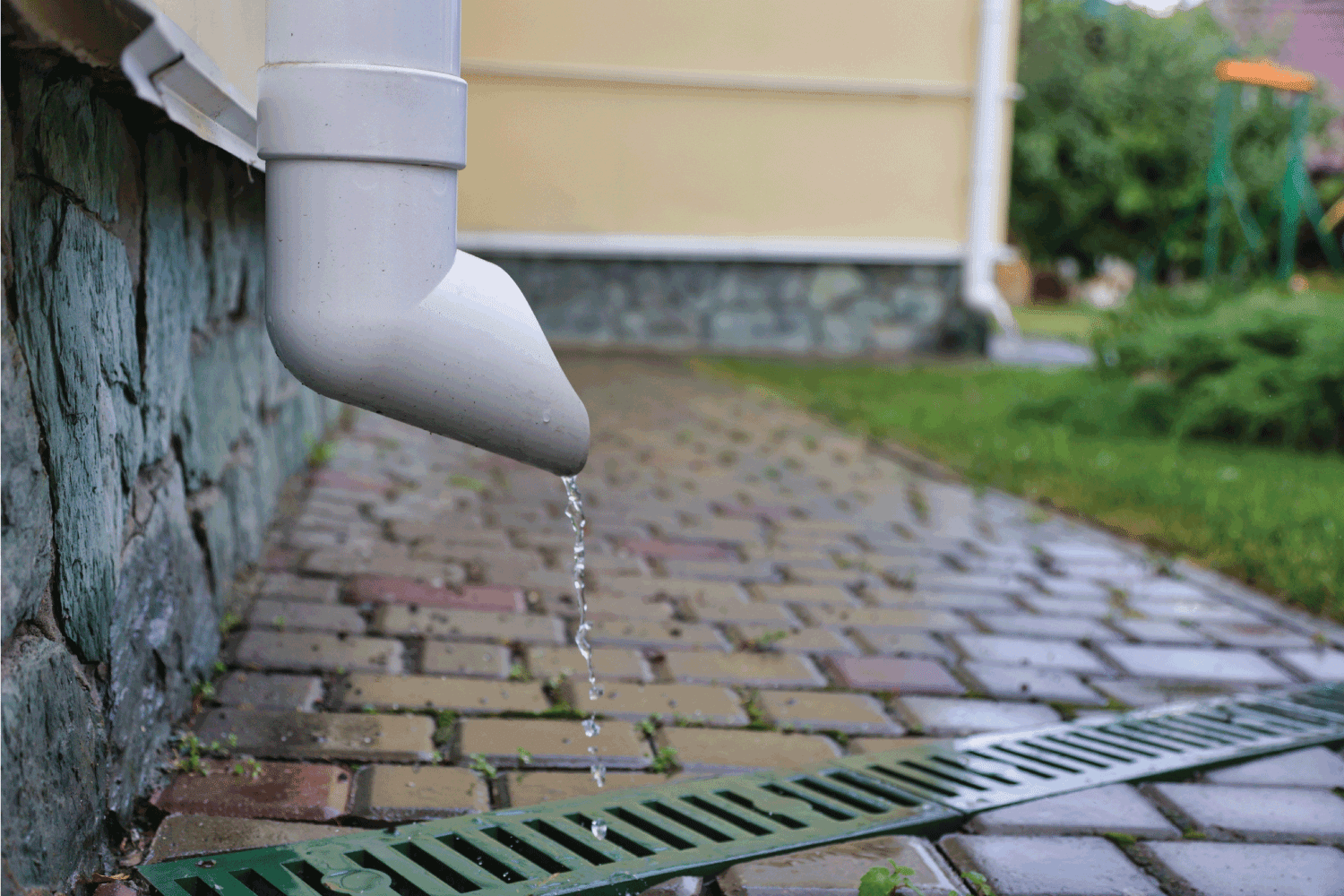
How To Install A Condensate Drain Line
Proper installation of a condensate drain line guarantees effective operation, resulting in enhanced air systems. Here's a step-by-step guide on installing an AC drain line.
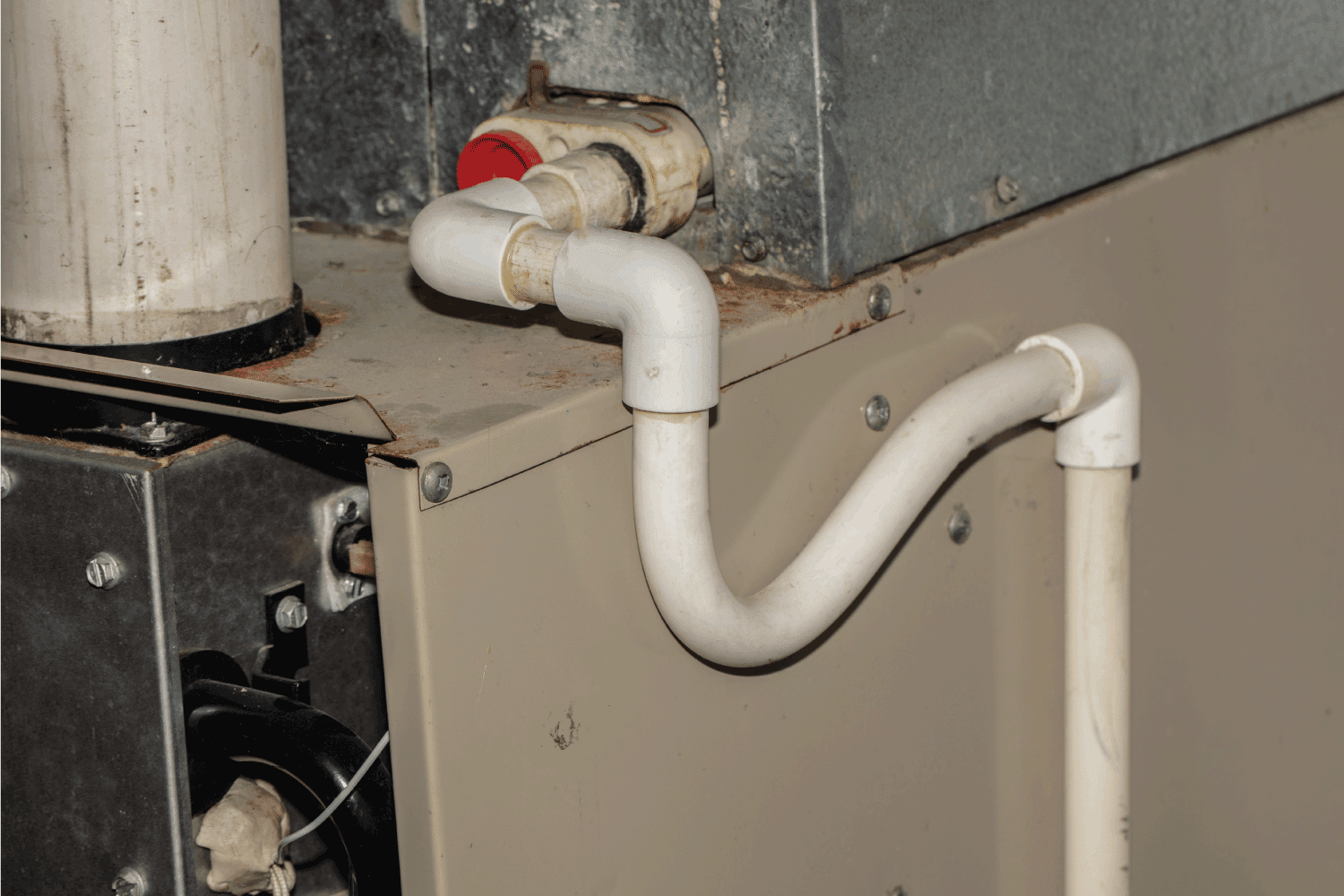
Step 1. Check On The Unit
Shut off your air conditioner, then turn off the HVAC's circuit breaker or power supply. For extra measure, disconnect your unit from the power source.
Evaluate your AC to locate the condensate discharge outlet, usually by the overflow or drain pan. You can use your owner's manual to find and check the outlet quicker.
Step 2. Choose The Drainage Route
Most condensate drain routes are ready for installation with most home structures. It provides a suitable way to run the drain line based on the environment and with the fewest obstructions.
If your home's design doesn't have this, carefully examine your home's exterior, interior, and AC location to determine the best route for drainage.
Note that the pipes should pass discreetly and not clash with other utility systems. As much as possible, run them in hidden locations and ensure they doesn't drain over public areas like sidewalks, stairwells, or driveways.
Take take to consider other options until you come up with the ideal placement before you finalize it. Installation difficulty and running distance are a few things to consider, since it's best to have the final points close together.
Step 3. Make The Preparations
Start by preparing your tools and materials. You will need the following equipment for this task:
- Drain pipe
- PVC glue and primer
- Pipe materials
- Measuring tape
- Hacksaw or pipe cutter
- Drill
- Sandpaper
Most experts recommend getting PVC, PEX, or CPVC drain pipes with additional protection against UV rays, which may incur added costs. You can consider copper and stainless steel pipes if you have a bigger budget.
In choosing a pipe size, use the measuring tape to get the diameter of the drain line connection on the AC drain pan. The standard size is 1/2 inches.
After deciding on your final route, you can begin with prepping the surface as needed. If you run it through the walls, you can drill wall clips or open a path in the wall using a chisel or hammer drill.
When drilling a hole for the releasing point, leave around an inch away from the end of the surface, then carefully punch the rest for a clean cut.
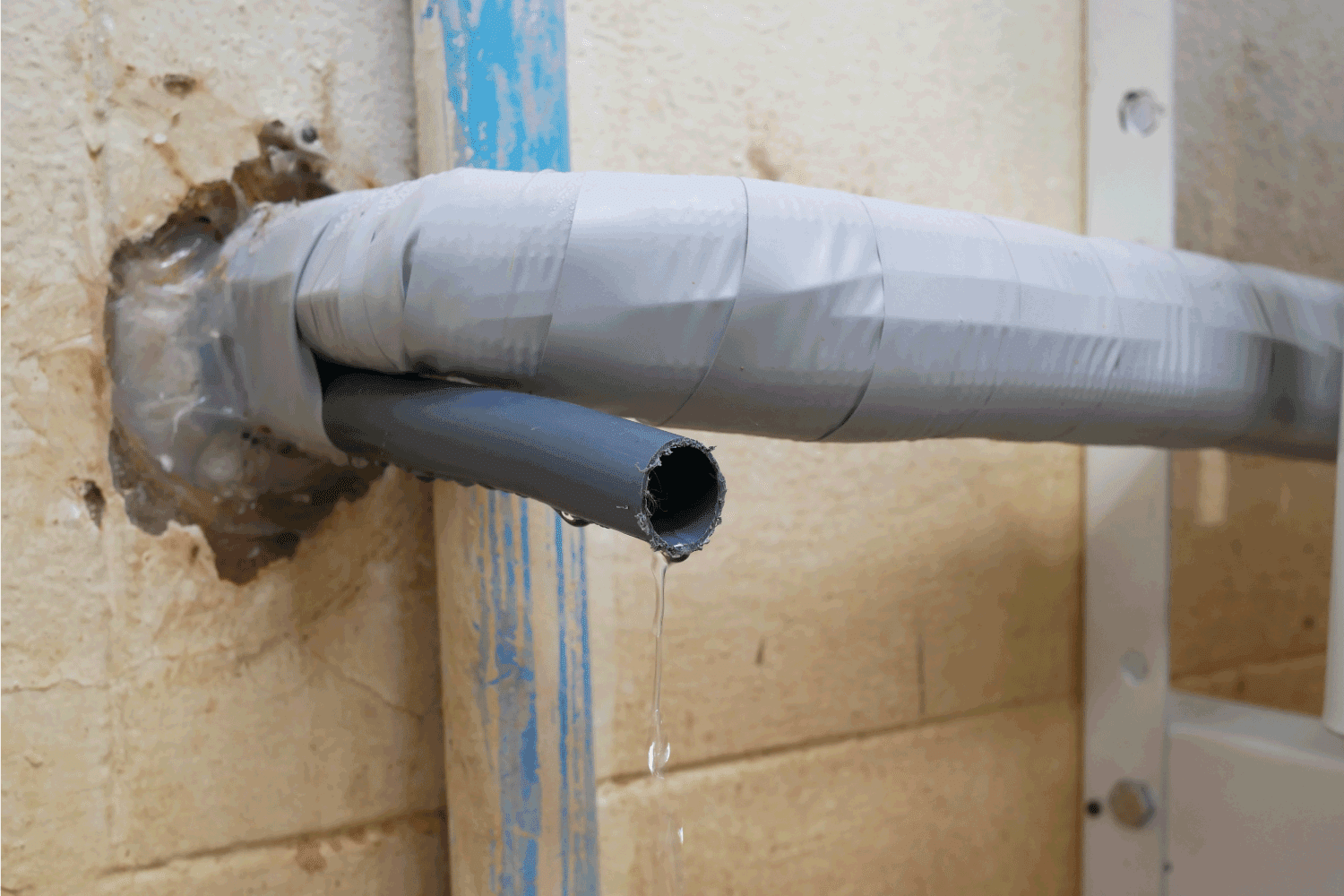
Step 4. Connect The Pipes
Measure and cut the pipes to the length of the drain pan connections to the exterior draining points. If you have PVC materials use a hacksaw. For metal pipes, use pipe cutter. Rough edges should be sanded.
Check if the pipes fit the outlets and route correctly. They should drop about 1 inch per 3 feet.
Prior to connecting the drain lines, find the connections by placing your finger into each hole on the AC. The clear outlet is your primary drain line, while the blocked outlet is the secondary line.
The inlet flanges should be fastened to your AC drain pan. Then use a pipe thread compound to seal the threads to the flanges and screw them together.
You can fasten the pipes with glue or solder them until they reach the outlet holes. If the outlets are not threaded, use PVC glue or primer before connecting them.
Check out the Oatey PVC Regular Cement and NSF Purple Primer Handy Pack on Amazon.
Create a trap to prevent air suction while allowing moisture flow, ensuring the vent is not too shallow or too deep.
Step 5. Run The Final Line
Run the discharge drain line to the deposit point. There's not much to worry about with transporting condensate on vertically installed pipes, but if they're horizontal, you should have slopes with a 0.4 inch depth difference for every 3.2 feet to the final point.
Step 6. Turn Power On And Check Unit
After finishing up, plug your AC back in and turn it on. Check if the drain line works as intended or if there are other issues you might need to address.
If problems persist, contact an HVAC professional to evaluate your system.
Read this post to learn how to snake an AC drain line: Can You Snake An AC Drain Line? [And How To]
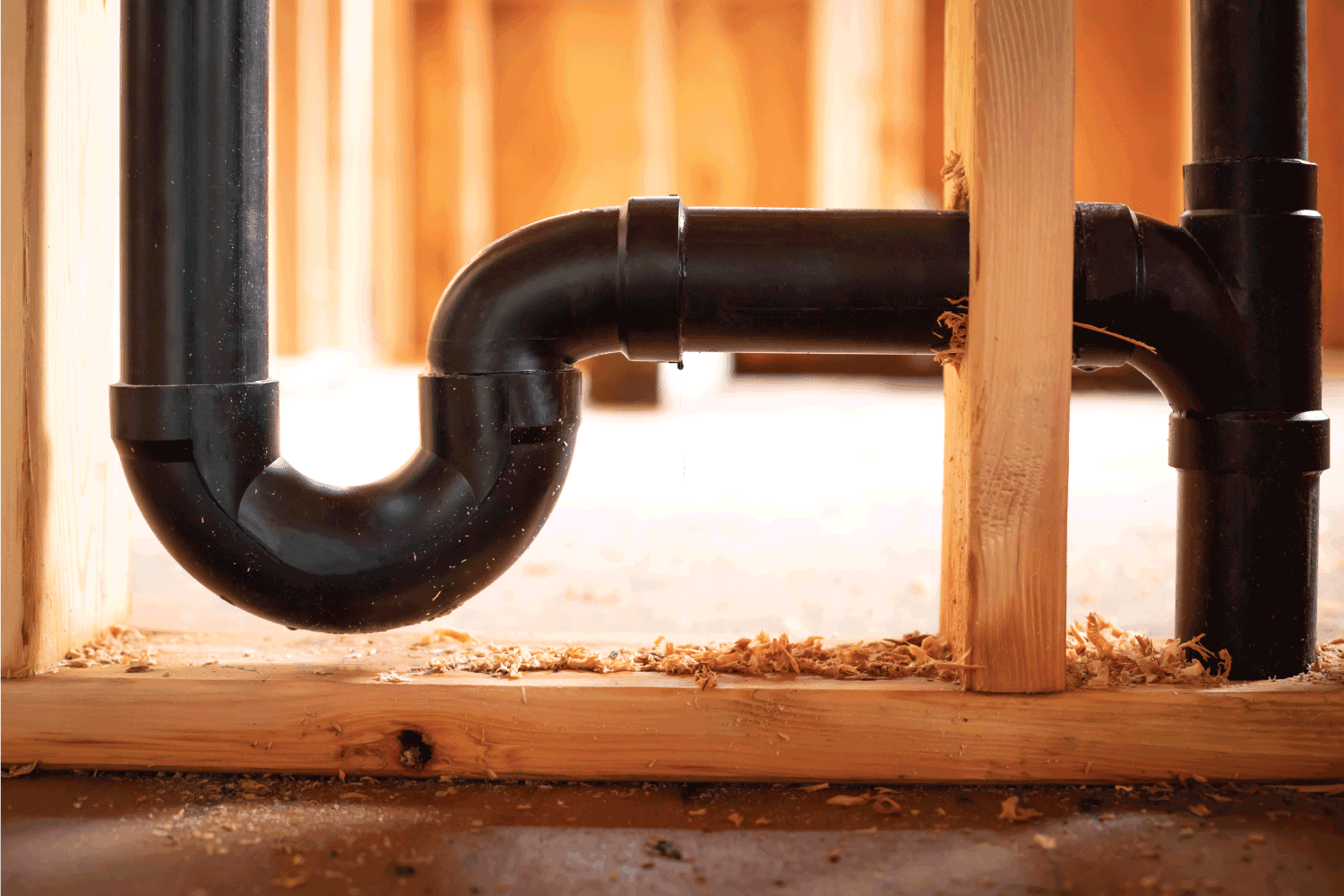
Does My AC Drain Line Need A P Trap?
Yes, AC drain lines require a P trap unless the manufacturer says you don't need it. The P trap is responsible for draining the water produced by air condensation.
If you install an air conditioner drain line without a P trap, condensate will not be able to escape from inside the AC.
The trap also blocks dust and debris from passing and spreading within the unit, meaning you would only need to clean your AC at least once a year. Apart from dirt, a P trap can also prevent unpleasant odors from outdoor elements from entering the drain lines.
With a P trap, your AC drain line and unit may allow unfiltered air to spread throughout your home, in addition to the unintentional discharge of condensate.
Click here to see the Dearborn P-Trap with Threaded PVC Adapter on Amazon.
Common AC Drain Line Problems And Easy Solutions
An air conditioner drain line is generally a simple device. However, incorrect installation and lack of maintenance can lead to several complications that can affect the performance of your cooling system.
Listed are a few common problems with quick solutions.
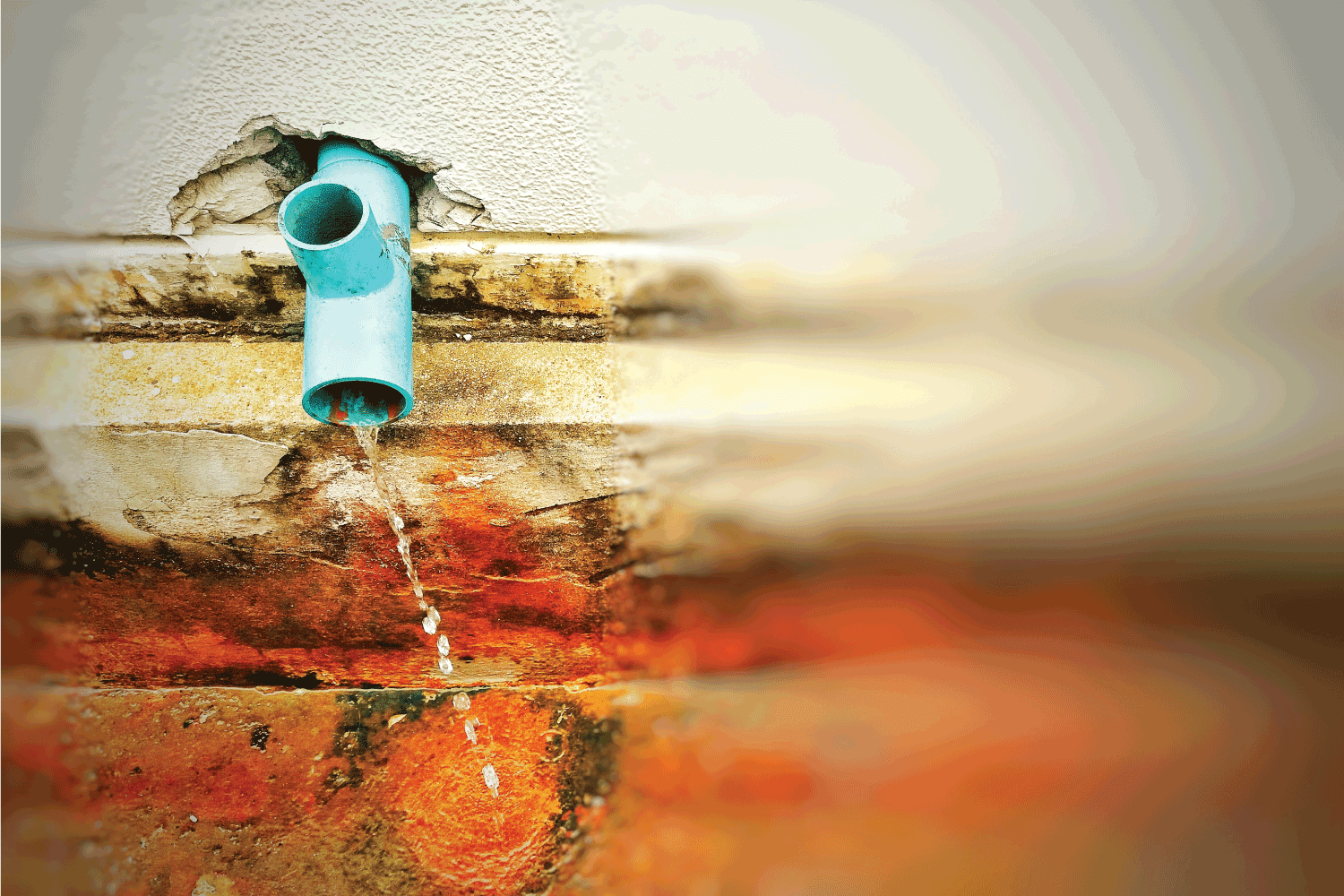
Clogging
When debris enters the drain line and collects in the evaporator coil, it can develop clogs. One way to know there's a blockage in your condensate drain line is by checking for water dripping around your AC.
Some conditioners have an inline safety float switch to protect the unit from water damage from clogged drain lines. In this case, evaluate your drain pan to identify the water level before it gets too high.
Here's how to unclog it:
- Turn the air conditioner and circuit breaker off.
- Locate the drain line pipe, then uncap it.
- Check for any debris stuck inside.
- Carefully remove the blockage. Make sure not to push it in further.
- Take a cup of distilled white vinegar and pour it into the pipe.
- If vinegar isn't enough, use a wet/dry vacuum to remove clogs and trapped water.
- Replace the cap and wait for about half an hour before turning on the AC.
Mold Growth
It's vital to keep your condensate drain line and pan free from moisture to prevent mold growth. But if you notice musty smells coming from them, there might already be mold growing in them.
Cleaning the drain line is the best way to get rid of mold. Here's how:
- Shut off your AC and turn the main power off.
- Locate your condensate pan. Uncover it if it comes with a panel.
- Use a vacuum to remove moisture or rags to soak excess water.
- Clean the drain pan with soap and clean water.
- Locate and uncap your drain line.
- Vacuum out blockage or clear it of any debris.
- Pour distilled vinegar, peroxide, or hot water mixed with dish soap into the pipe.
- Let the solution sit in the line for 30 minutes before flushing it with water.
Flushing the drain line with vinegar at least once a month is another preventive measure you can take besides cleaning it. You can do this by pouring a cup of vinegar into the drain line and leaving it for a few minutes before rinsing it with clean water.
Drain Pan Breakage
Your drain pan can fail regardless of the material. If you have a metal condensate pan, it can corrode and cause further water complications. But if you own a plastic drain pan, it can develop cracks, causing water to leak out instead of moving to the drain line.
When this happens, you should replace your drain pan or contact an HVAC professional to assist you with the issue.
Get the DiversiTech Plastic Condensate Drain Pan for HVAC System on Amazon.
Learn more solutions for condensate drain line issues in this post: Should Air Be Coming Out Of My Condensate Drain Line?
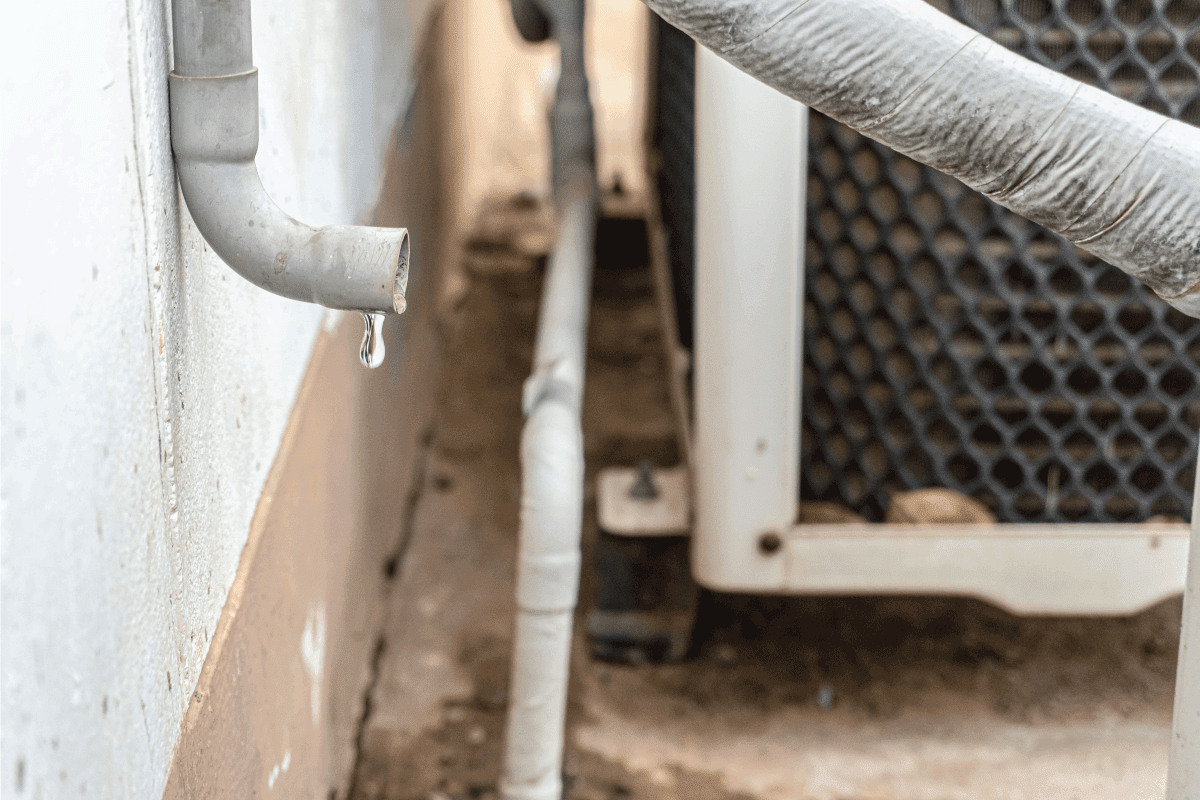
The Bottom Line
When installing an AC drain line, you should run it from inside the home to the outdoors. The ideal drainage path mostly depends on your home's current structural design, along with your preference.
A condensate drain line is a simple mechanism, but it requires a lot of thought and precision. It's essential to make sure it operates effectively through proper installation and maintenance.



